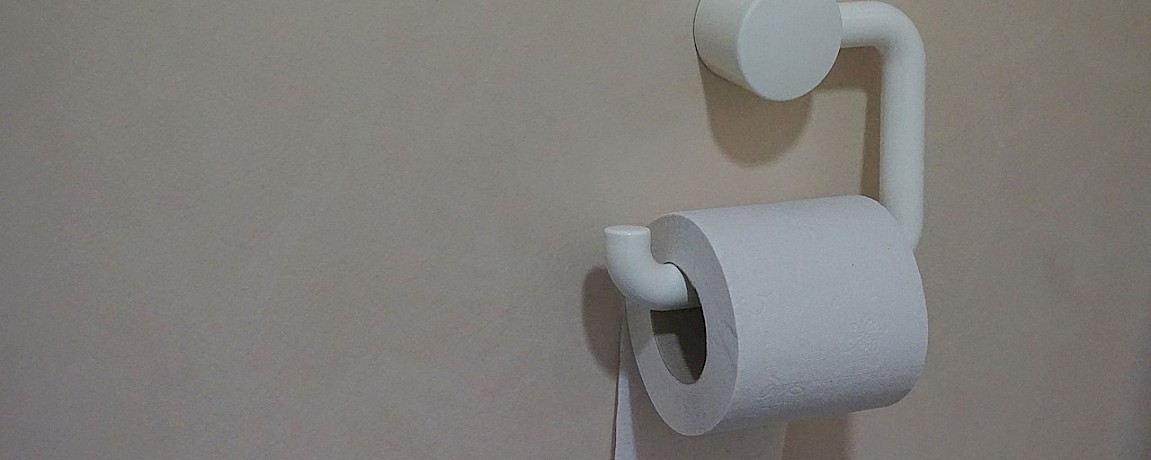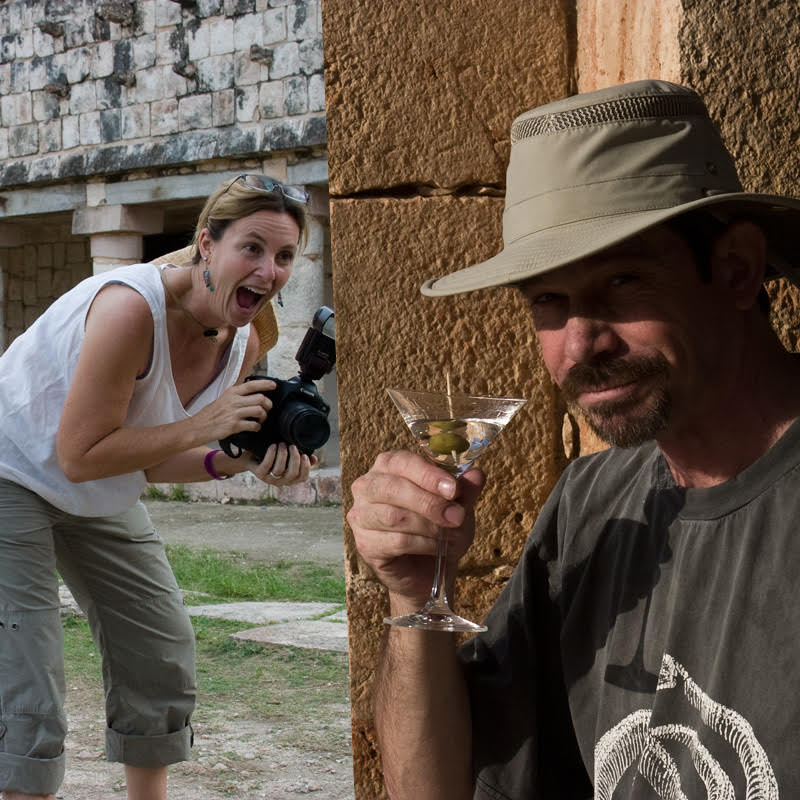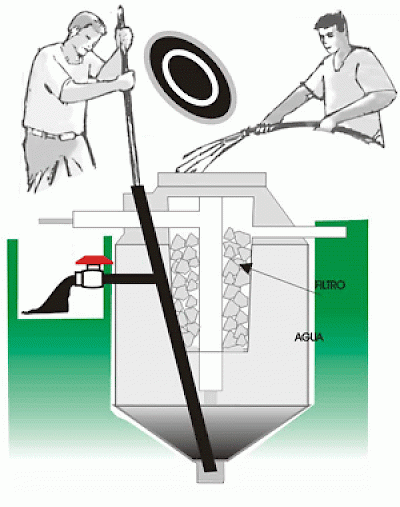Sistemas sépticos mexicanos
Prometimos explicar por qué no debes tirar papel en un inodoro mexicano, y no te vamos a fallar. De hecho, hay varias respuestas a esta pregunta y la más desconcertante de todas es: ¡puedes tirar papel en un inodoro mexicano! Sí, puedes. El inodoro no va a escupir el papel como si fuera un billete arrugado en una máquina expendedora. La policía del baño no va a llegar a tu puerta. Y no habrá ningún efecto inmediato por tu indiscreción.
Pero sería grosero.
En muchos destinos turísticos en México, especialmente en hoteles donde hay tratamiento moderno de aguas residuales, se te anima a tirar el papel, igual que en Gringolandia. La administración del hotel incluso puede poner pequeños letreros para avisar a sus huéspedes mexicanos que se espera que desechen su papel confort en el inodoro. Tienen que hacer esto porque a los mexicanos se les entrena desde niños para ser muy educados.
Pero fuera de las zonas turísticas, y especialmente en casas particulares, encontrarás un pequeño bote de basura cubierto, de plástico o forrado de plástico, cerca del inodoro. Si ves uno, sé un invitado educado y pon tu papel ahí, no en el inodoro.
Para entender qué tiene que ver la etiqueta con la forma en que se desecha el papel de baño en México, necesitamos una comprensión básica de los sistemas de drenaje. Si estás leyendo esto desde tu casa u oficina en Gringolandia, lo más probable es que tu inodoro (y todo lo demás que se drene de tu casa) esté conectado al sistema público de alcantarillado de tu ciudad. Todo lo que tiras fluye a través de grandes tuberías de concreto hacia una planta de procesamiento industrial donde los sólidos se separan de los líquidos. Los líquidos se filtran y se tratan con químicos, y el resultado se libera de regreso al medio ambiente de la manera menos ofensiva posible, donde la naturaleza termina el proceso con evaporación y lluvia. Los sólidos también se tratan y refinan, resultando en basura o fertilizante. Esta inmensa infraestructura es bastante costosa de instalar, operar y mantener. También consume mucha energía. Así es como se usan tus impuestos.
Los gringos que tiran la cadena fuera de los límites de la ciudad usan un tanque séptico privado, llamado fosa séptica o sumidero aquí en México. En Gringolandia, un tanque séptico generalmente está hecho de un plástico duradero y tiene dos cámaras, cada una con un tubo en T dentro. La primera es la cámara de sedimentación, donde entra inicialmente el agua residual. El usuario Plawerth explica el proceso de manera sencilla en su comentario:
Cuando los desechos entran al tanque, el papel, el popó y cualquier aceite del baño flotan cerca de la superficie formando una capa conocida como nata. Con el tiempo, las bacterias consumen nutrientes en la nata, y luego se asienta en el fondo como lodo denso, que es básicamente composta inerte.
Cuando entra líquido al tanque, una cantidad igual de líquido sale por el tubo de desagüe. El tubo en T con su tubo largo extendido hacia abajo evita que la nata flotante salga del tanque. La parte superior del tubo en T permite ventilar el metano y otros gases, mientras evita que la espuma de jabón y la nata ligera por encima del nivel del agua salgan del tanque.
Algo de nata todavía puede pasar, por eso casi siempre hay al menos dos cámaras, y a veces tres cámaras, cada una con un tubo en T en la salida de líquido para restringir la nata de salir de la cámara. Usualmente la primera cámara contiene la mayor parte del lodo y la segunda y tercera cámaras contienen poco o nada de lodo.
Si el tanque no se limpia del lodo con la frecuencia suficiente, eventualmente se llenará de lodo en todas las cámaras, y entonces los sólidos empezarán a salir del tanque y taparán el campo de absorción.
Un filtro en la salida final ayudará a evitar que sólidos que se desbordan de un tanque séptico mal mantenido lleguen al campo de absorción, pero este debe ser una malla plástica fina o una capa de arena, no solo un montón de piedras grandes sueltas.
A diferencia de sus vecinos del norte, casi todos los mexicanos usan una fosa séptica, que no es muy diferente a un tanque séptico de Gringolandia. Esta tecnología es muy antigua, así que el proceso es el mismo. La única diferencia son los materiales. Aquí en México, muchas casas coloniales y otros edificios fueron construidos antes de la llegada del plástico, por lo que la mayoría de las fosas sépticas están hechas de piedra aplanada o block de concreto. Mientras que los tanques sépticos plásticos tienen una o más tapas de registro para permitir la inspección y limpieza, las fosas sépticas mexicanas generalmente están cubiertas con una losa de concreto y selladas con mezcla, como una tumba.
La diferencia importante entre una fosa séptica mexicana tradicional y un tanque séptico plástico de Gringolandia es lo que sucede cuando el líquido clarificado se libera de regreso al ambiente. En la versión plástica, el líquido entra en uno o más tubos de PVC perforados, que están enterrados en zanjas largas de aproximadamente un metro y medio de profundidad, llenas a la mitad con grava y cubiertas con tierra. Esto se llama campo de absorción, y es donde quieres plantar tus fresas.
En la versión mexicana tradicional, el líquido baja a un filtro, que es un pozo forrado de concreto lleno con varios centímetros de grava en la parte superior, seguido por varios centímetros de carbón en el medio y un pie o dos de arena en el fondo. ¿Por qué usar un filtro y no un campo de absorción? Una razón es que el filtro no usa plásticos. Otra es que este método ocupa menos espacio, lo cual es un requisito en zonas urbanas coloniales.
Pero el filtro es el obstáculo, por así decirlo, en el camino del papel de baño. Aunque gran parte del papel que se tira en un inodoro mexicano permanece en la cámara de sedimentación de la fosa séptica, pequeños trozos pasan flotando por la cámara de clarificación y llegan al filtro, por lo que con el tiempo se acumula una especie de lodo de papel maché.
¿Cuánto tiempo tarda en taparse un filtro? Nadie sabe. Depende de qué tan grande sea la fosa séptica y el filtro, cuántas personas usen el baño y cuánto papel u otras cosas no biodegradables estén tirando. Podría tardar tres años, o cinco, o diez. Si no se tira nada de papel, podría tardar cincuenta años o más.
Como probablemente sabes, todos los sistemas sépticos eventualmente se llenan de lodo y cosas no biodegradables y hay que vaciarlos. En Gringolandia, donde la mayoría de los tanques sépticos están bajo un césped en el patio, no es un gran problema: solo hay que cavar unos minutos, desenroscar la tapa y bombear.
En México, el mantenimiento puede ser un poco más problemático. Muchas fosas sépticas están bajo el patio, o pueden estar bajo la cimentación de tu casa o incluso parcialmente bajo la casa de tu vecino, porque muchas de estas viejas casas coloniales son el resultado de subdividir una mansión más grande. Incluso cuando están en un patio trasero, el acceso es limitado, lo que significa que los trabajadores y sus mangueras probablemente pasarán por tu puerta principal. Además, la mayoría de las fosas sépticas son tan viejas como las casas. Excavarlas, como desenterrar una tumba antigua, puede ser riesgoso, causando grietas o un colapso total.
Aquí es donde la famosa austeridad mexicana se encuentra con el entrenamiento mexicano para el baño. Sin importar su nivel socioeconómico, los mexicanos estiran sus pesos y prácticamente todo lo demás. Cuando la comodidad de tirar el papel al inodoro implica gastar pesos abriendo una fosa séptica, los mexicanos prefieren quedarse con los pesos. En este sentido, sería tan grosero tirar papel en el inodoro de tu anfitrión en México como dejar abierta la puerta de su refrigerador.
La mayoría de las casas nuevas y desarrollos residenciales que se construyen en México hoy en día sí usan tanques sépticos plásticos en su construcción. Cuando trabajábamos en el diseño de nuestra nueva casa, nos ofrecieron la opción de un tanque séptico plástico o la tradicional fosa séptica. La versión plástica, llamada Septi-K, se promociona como una versión amigable con el ambiente. Cuesta menos que una fosa séptica y tiene una tapa que se puede quitar para enjuagar el filtro interno. Los líquidos clarificados se vacían en un campo de absorción o drenaje francés. Cada diez a 30 meses, dependiendo del uso, tienes que sacar manualmente el lodo (eh... barro), el cual puedes usar en tu jardín como fertilizante o quizás compartir con tus amigos. Y puedes tirar papel ahí como un gringo.
Hmmm…
Cuando visitamos Gringolandia, ahora nos sentimos incómodos tirando papel en el inodoro. ¿Será porque separar reciclables a mano es más ecológico? ¿Será porque se siente como tirar dinero por el inodoro? ¿O simplemente es la fuerza del hábito? Difícil de decir. Al final, elegimos la fosa séptica tradicional para nuestra nueva casa.
Así que ahora ya sabes qué hacer cuando visites nuestro baño y por qué lo haces. Gracias a ti, puede que nunca tengamos que dar servicio a nuestra fosa séptica. Al menos de esta pequeña manera, nos hemos asimilado a la cultura mexicana.










Comments
the_working_grillos 6 years ago
Thank you! We have updated the article with your comment.
Reply
Lori 7 years ago
Hello,
I live in Chuburna de Higaldo and have never had a septic system. I moved here a year and a half ago and told the owner I spelled sewage coming out of my bathroom sink and shower on a continuous basis. She blamed it on something else and had a plumber change the position of the plastic tube under the kitchen sink with a clothes hanger wire.
Things finally got bad and something that smelled like sewage and looked like a mix of sewage, food, paper, and trash of various colors backed up into my kitchen sink and shower. She sent out guys with caustic acid powder. They mixed it with water and it got very hot and the smell was terrible. They dumped it into the shower and said to rinse it with water in the morning.
An hour later a truck came, saying the owner sent her with some sort of pressure system. They filled a large barrel with my water which is expensive and put some sort of thing in my toilet and flushed everything with pressure caused by this barrel of water. My house was left a smelly and dirty mess.
I asked if perhaps the septic tank needed to be emptied and she said she did not know where it was and it was not necessary here. She sent out two guys I had to pay $200 pesos to and they took a large pick and made two large holes in my patio looking for the pipes leading to the poso or whatever it's called. The holes are still there. Now she wants $2,000 pesos for pressure treatment saying I should have never let them in when they told me they were here because the owner sent them and she was going to pay. I guess she called the guy to put the acid in second and forgot to cancel the pressure treatment and blames it on me for not calling he to overlook the process. I had an out of town guest here and it was terrible. Now she is making my life a living hell over that money and when I told her not to send the guys to patch the holes with cement because I was sick and working from home to please send on another day she said let us in or get out of my house. I have no contract with her and just assumed large household repairs would be paid by the owner. Since moving in many things have broken and she always makes me pay half or all of it. I am very confused. Any advice would be appreciated.
Regards,
Lori
Reply
Plawerth 7 years ago
Eh, it's amazing how much is wrong here. The main part of a septic tank of any kind that keeps toilet paper out of the liquid drain, is a pipe tee on the outlet.
The bottom of the tee has a tube extension about 0.5m long extending down into the liquid, and another tube extension on the upper part that extends almost to the roof of the tank. The old style plaster/concrete tank can also be equipped with a tee on the liquid outlet.
When waste enters the tank, the paper, poo, and any oils from bathing will float near the surface as a layer known as scum. Over time bacteria will consume nutrients in the scum, and it then settles on the bottom as dense sludge, which is basically inert compost.
When liquid enters the tank, an equal amount of liquid flows out the drain pipe. The tee with its long tube extending down below the surface prevents the floating scum from leaving the tank. The upper part of the tee allows methane and other gases to vent out, while preventing soap foam and lightweight scum above the water line from leaving the tank.
Some scum can still potentially pass, though, which is why there is almost always at least two chambers, and sometimes three chambers, each with a tee on the liquid outlet to restrict scum from leaving the chamber. Usually the first chamber contains most of the sludge and the second and third chambers contain little or no sludge.
If the tank is not cleaned of sludge often enough, eventually it will fill with sludge in all chambers, and then solids will start to leave the tank and plug up the leach field.
A filter on the final outlet will help keep solids that are overflowing out from a poorly maintained septic tank from reaching the drain field, but this needs to be a fine mesh plastic screen or a layer of sand, not just a pile of large loose rocks.
Reply
W. Carter 10 years ago
In rural coastal areas, are septic tanks used to gather and hold excrement? Are septic tanks flushed out periodically?
Reply
daryl 10 years ago
Up here in victoria, british columbia the city still pumps a million gallons per day of raw sewage into the pretty harbour. Mexico has septic pits as in rural parts of canada and somehow mexico is the dirty rat ????? Kelowna discharges and has the water intake close to this and beaches get closed due to e-coli as well.
Reply
Ann 12 years ago
I went to Mexico for the first time in my life and was shocked to know that the place I was staying at, which was not a big resort, did not allow us to flush the toilet paper down the toilet. Many times I had to 'fish' out the toilet paper from the toilet because I have been accustomed to flushing my toilet paper down the toilet. I now understand why people have always said that a person should only drink bottled water...if the waste water is not filtered properly and the water is not purified, it's no wonder a person would get sick. I wish that I had read this article before going to Mexico because it was a 'rude awakening' for me. I now have a greater appreciation for my own country because I used to take things like that for granted...now I appreciate our sewage and water systems and realize how fortunate I am to live in a country that has proper sewage and water systems.
Reply
Alex 12 years ago
We live in the Sonoran desert in San Carlos . All the fosas here are basically a 10' x8' x 7' deep hole in the ground. The bottom is dirt and the sides are staggered bricks to allow effluent to bleed off. There is no drain field just the hole in the ground. These work well here but need to be flushed and pumped every 15-20 years. We do not throw toilet paper in the toilet. I like the simplicity but feel that these may be too simplistic. Would like any comments and or suggestions
Reply
wpcoe 12 years ago
I've lived in Thailand for 13 years, and for the most part, local Thais (especially in rural Thailand) do not flush toilet paper down the commode.
However, most toilets have a hand held water sprayer hanging on the wall where most of us have toilet paper rolls hanging. It is identical to the vegetable sprayers many US kitchens have at the sink. All it takes is a T-junction to be able to divert the water from the pipe in the wall to two directions: one to the commode and one to the sprayer.
Took me a few uses to master the art of spraying my backside without unduly wetting the entire bathroom, but I swear by the thing now. Wiping with paper just seems unsanitary. Ditto for using your left hand and a bottle of water.
Even better are the "washlets" of Japan, which are toilet seats with a built-in bidet function. A telescoping tube comes out the correct distance and rinses the appropriate area -- a separate setting is used for women's personal hygiene. Some models have a heating element for areas (like Japan) where the water might get too cold in winter to spray at your derrière.
I still use a little toilet paper to dry myself off, but I know many (most?) people just pull up their pants/skirts and air dray naturally. Some of the fancier Japanese washlets have a fan to blow you dry with heated air.
Reply
Lindsay 7 years ago
I had the same revelatory experience in Thailand, but not until today, when a friend let me know I could buy one on Amazon, did I have the thrilling realization that my toilet paper days have come to an end. Everyone should install this. Save the environment from toilet paper, save money on toilet paper, save your septic system, and be even cleaner than you would have been. https://www.amazon.com/dp/B07121VL4D/ref=cm_sw_r_cp_awdb_t1_STc4CbKFMZ8TW
Reply
Antonio Suarez 12 years ago
Brilliant detailed explanation! I agree how we feel when having the possibility to flush when we are used to throw paper in to bags. What I have decided is to flush the first one or two papers I use, those contain 99% of shit while I throw the rest in the classic Mexican basket bag. I have a biodigestor SIRDO which is known for is environmental compromise.
Reply
Rodrigo 12 years ago
This is nonsense. I'm a Mexican, and I have lived in Mexico City all my life. I've never heard this argument for not flushing toilet paper before. It wouldn't damage the septic tanks and even if it does it's an exaggeration to say that almost all Mexicans have septic tanks under their houses. It is actually around 3/10 people and most of them living in urban areas. The rest of the country has county sewage systems. I invite you all Americans to come to Mexico and get to know our country a little better before you start talking nonsense.
Reply
(0 to 11 comments)Next »